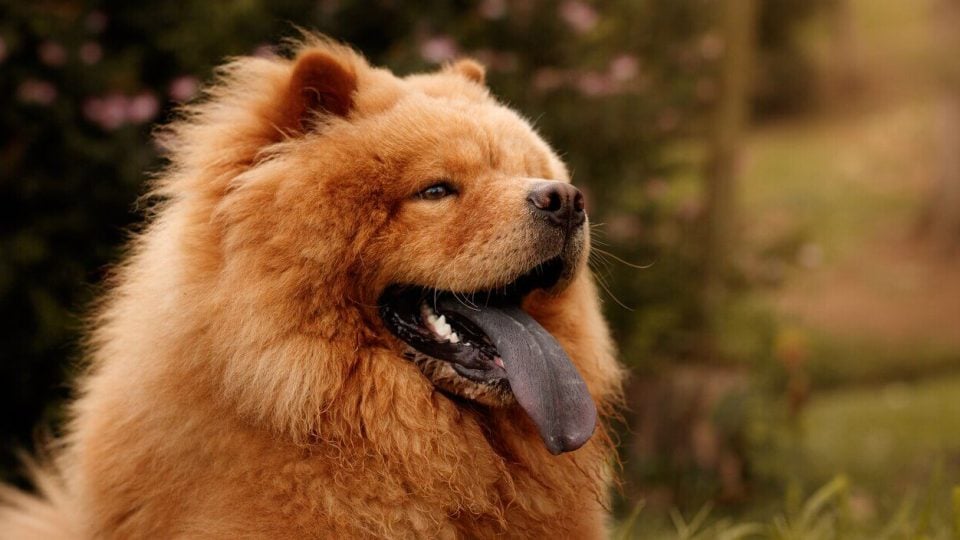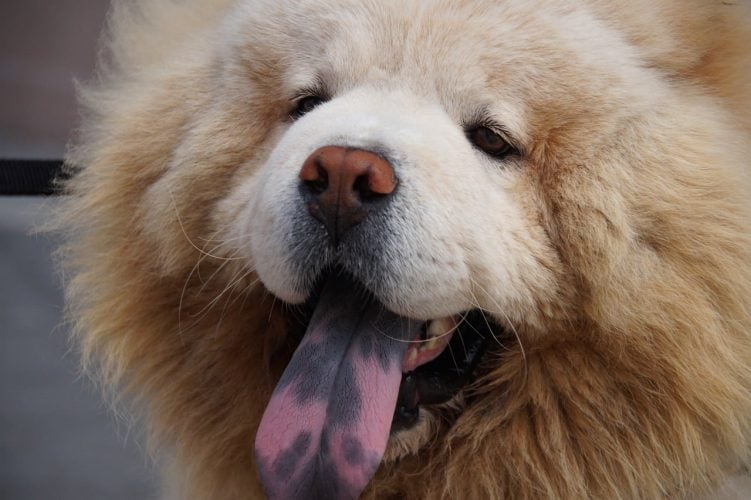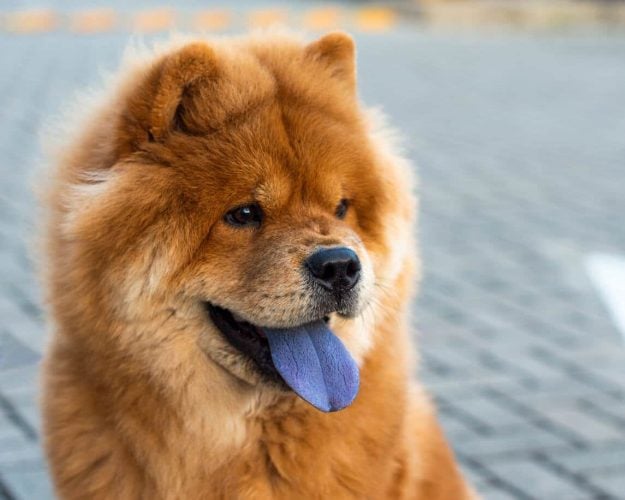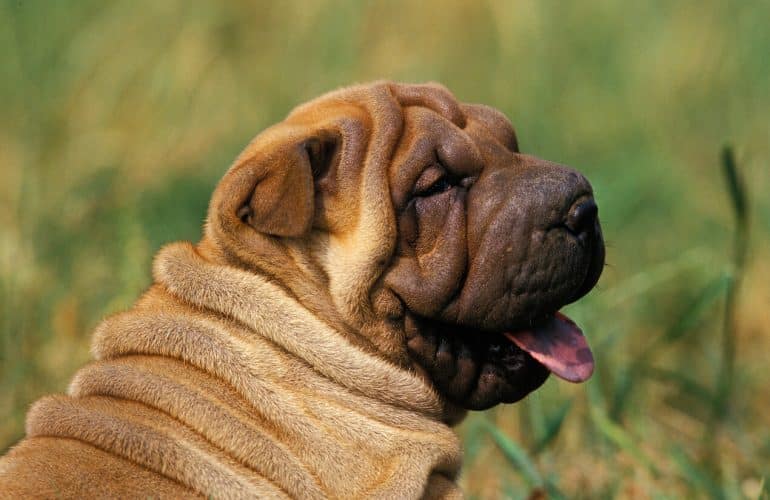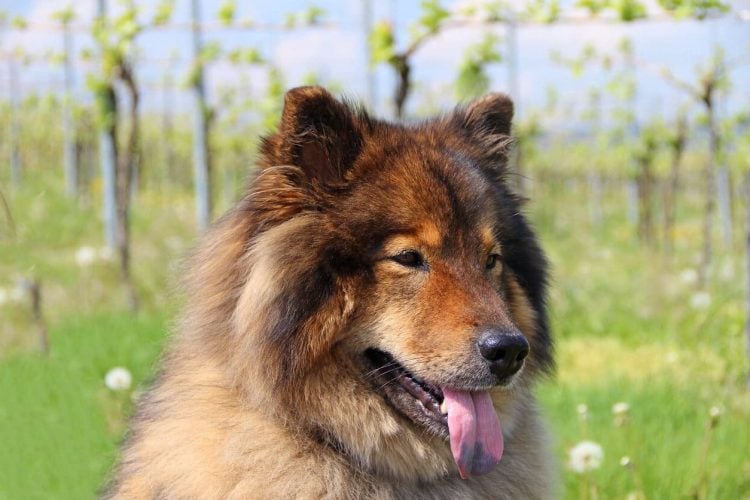Your dog’s tongue may appear black, blue, purple, or spotted as a result of extra pigmentation. Just as some people—and dogs—have freckles or birthmarks, many dogs have black spots or a completely black tongue.
“Pigmentation on the tongue is a deposition of colour and can be completely normal,” explains Stacy Choczynski Johnson, DVM.
Dogs of any breed, including purebred dogs, can have a black or spotted tongue, but some dogs are more likely to have a black tongue than others. If your dog has had a black tongue since birth, there’s no need to worry.
On the other hand, if your dog’s tongue has always been pink and you’ve suddenly noticed some black spots appearing, it’s best to make an appointment with your vet as soon as possible.
Why Do Some Dogs Have Black Tongues?
A black dog tongue doesn’t have anything to do with your dog’s dental health. Unlike a pink tongue, a black tongue contains extra melanin, or pigment, which gives it a darker colour.
Melanin, which produces skin, eye, and hair pigmentation, is the reason why some dogs have blue eyes and some dogs have brown eyes. It’s completely normal to have extra melanin in one specific area, like the tongue.
You may also notice white patches in some areas. These patches, called dog vitiligo, mean there’s no melanin in the area.
What about black spots on a dog’s tongue?
Black spots are also due to extra pigmentation. In the case of spots, however, this pigment is localised in a few areas instead of spread over the tongue.
“Some puppies are born with a large freckle on the tongue,” Dr Stacy says. She adds that the pigmentation should remain stable in size over your dog’s life. It shouldn’t cause them any pain.
4 Dog Breeds More Likely to Have A Black Tongue
Even though any breed of dog can have a black or spotted tongue, you may notice this more often in four specific breeds.
Both Chow Chows and Chinese Shar-Peis need to have a blue-black tongue to be considered purebred.
Chow Chow
The Chow Chow, one of the oldest dog breeds, originated in China, likely during the Han dynasty. These dogs have thick fur and a distinctive lion-like mane. They also tend to have an aloof nature.
“Chow Chows are known for developing large patches of pigment on the tongue, which can develop into an entirely blue or black tongue,” Dr Stacy says.
Chinese Shar-Pei
The Chinese Shar-Pei also originated in China, likely around 200 BC. Originally, people bred them for wild boar hunting. Their deep wrinkles, hippopotamus-like muzzle, and characteristic blue-black tongues give them a very unique look.
This loyal breed has a reputation for independence and intelligence.
Miniature Shar-Pei
Miniature Shar-Peis are smaller, compact versions of Chinese Shar-Peis. They share the same history as their larger relatives, but they were specifically bred to have a smaller size.
Eurasier
The Eurasier, a medium-sized dog, originated in Germany as a mix of the Chow Chow, Wolfspitz, and Samoyed breeds. These dogs often have purple, pink, and black spots on their tongues.
Which dog breeds are more likely to have black spots?
Any breed of dog can have black spots on their tongue, but Dr Stacy says she more often notices these spots in Cocker Spaniels, Retrievers, and German Shepherds. Shar-peis may also have spots instead of a fully black tongue.
Other dogs that commonly have black or black-spotted tongues include Akitas and Thai Ridgebacks.
Though again, any dog can have spots on their tongue. In fact, Dr Stacy says she wouldn’t try to guess a dog’s breed by their tongue, since many breeds have pigmented spots. So, if you’ve heard that a dog with black spots on their tongue must be part Chow Chow, that’s just a myth.
When To See A Vet About Your Dog’s Tongue Colour
It’s critical to understand the difference between normal pigmentation and neoplasia, Dr Stacy says, as approximately 5% of tumours develop in a dog’s mouth.
You generally don’t need to worry about an area of pigmentation that doesn’t change or ulcerate (develop sores). “On the other hand, malignant melanoma can ulcerate,” Dr Stacy says, adding that you may notice more of these spots over time.
Dr Stacy emphasises that a healthy tongue will not have raised patches or sores. You’ll want to visit your vet if you notice:
- your dog’s tongue turning a darker colour from its usual pink
- black spots developing on the tongue that weren’t present at birth
- a change in the appearance of tongue spots they’ve had since birth
- any signs of pain
Signs of oral melanoma
“Melanomas tend to cause pain in the mouth and a foul odour to the breath. These nodular masses are commonly dark in colour due to the replication of melanocyte cells,” Dr Stacy says.
Other signs of oral melanoma include:
- increased salivation or drooling
- difficulty eating or drinking
- food falling out of their mouth
- chewing only on one side of the mouth
- facial swelling
- blood in their food or water bowl
If you notice any of these signs, or other sudden changes in your dog’s behaviour, you’ll want to schedule a visit with your vet right away. They can make a diagnosis on your dog’s condition if they have a mouth disorder and recommend the right treatment, which may involve surgery or chemotherapy.
Other conditions that may affect the colour of your dog’s tongue:
- canine stomatitis
- dry mouth
- inflammation of the tongue
- mouth burns
- salivary disorders
- viral warts
- papillomas
“If your dog is relaxed and will show off his tongue, it’s worth giving a look. I recommend doing an at-home oral exam regularly on pets to observe for changes,” Dr Stacy says.
At the end of the day, it’s always worth paying attention to any changes you notice in your dog, including the colour of their tongue. If you catch sight of anything unusual, a veterinarian can help pinpoint the cause of those changes. There may be nothing at all wrong with your dog’s health, but it never hurts to have them checked out.
